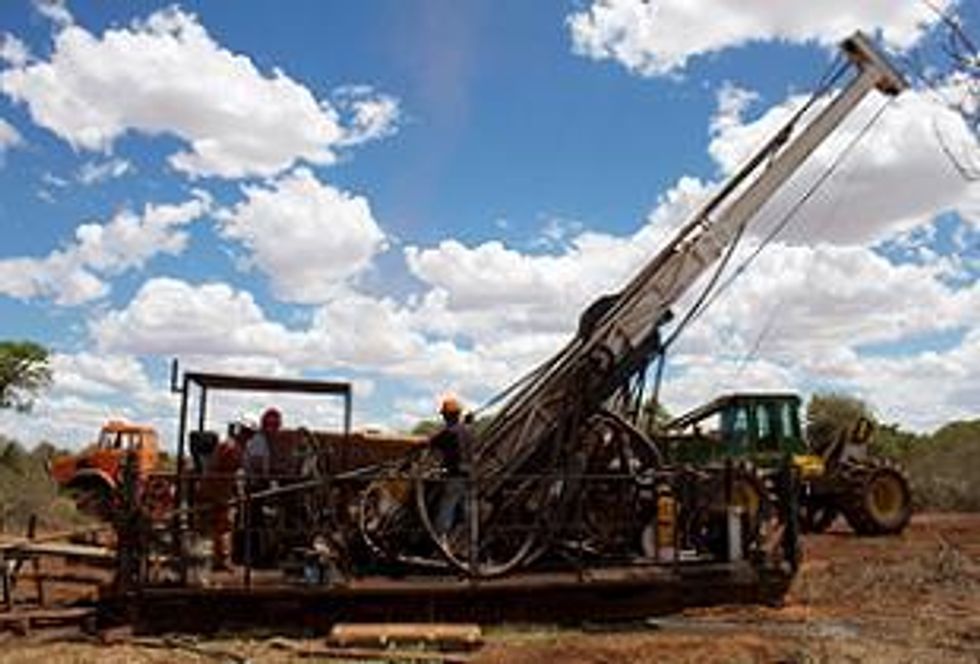The Green Giant Vanadium in Madagascar currently is one of the largest vanadium deposits, though expensive extraction costs may hurt economic viability. But the company remains confident in the potential of their unique deposit.
By Damon van der Linde – Exclusive to Vanadium Investing News
The Green Giant Vanadium Project in Madagascar currently ranks as one of the largest vanadium deposits in the world, and though property owners say their product has potential in the growing vanadium-redox battery market, there are concerns that expensive refining costs could hamper its economic viability.
“From our perspective the metallurgy at this point isn’t really conducive to economic extraction so we’re not very bullish on that project itself,” said Jonathan Lee, a battery materials and technology analyst with Byron Capital Markets. “I know they’ve been working on the metallurgy for a while, but in our view they haven’t been able to find an economical metallurgical process.”
Lee says he is concerned that because the vanadium at Green Giant is poly-mineralic—it’s hosted in many different minerals. As a result, refining the ore to extract the vanadium is more complex including an additional roasting process which is more expensive and energy intensive than extracting the more common magnetite-hosted vanadium. However, Green Giant owners, Toronto-based Energizer Resources Inc. (CVE:EGZ), argue that because they are the only company that has announced its intention to produce the high purity vanadium pentoxide required by the battery technologies as its primary product, they are targeting a very different market than the dominant steel industry.
“It’s comparing apples to oranges. The element is the same, but the product at the end is different because it’s going to different places,” said Craig Scherba, VP of Exploration at Energizer. “We’re anticipating that is where the growth in the vanadium market will come from. We can still supply vanadium to the steel industry, but we’re looking at the battery side of things as well.”
Scherba says that Energizer’s vanadium is unique because it is sedimentary-hosted and extremely pure (99.4 percent), in contrast to the majority of other vanadium deposits, which are magnetite-hosted. In magnetite-hosted deposits, the material is extracted, crushed and sent through a rotary magnetic separator. Because the vanadium is entrained in magnetite, it comes out with magnetic separation and the concentrate can be put directly into blast furnaces for the steel industry.
“The other type of deposit—ferrovanadium—goes into the steel industry. That’s the only place it can go unless they have a complex chemical refining process afterwards. Even then, ferrovanadium cannot be refined to the same purity,” said Scherba. “After chemical extraction we can get our vanadium up to a very high purity rate. What that does is enables us to sell the vanadium to chemical manufacturers for a battery market, and that’s what we are targeting.”
Scherba also says that because most vanadium projects have off-take agreements with the steel industry, there is an opportunity to focus on the growing market to meet the demand for high-purity vanadium in both small-scale car batteries, as well as the grid-sized Vanadium Redox Batteries (VRBs). He says that Energizer is currently in discussions with a number of battery groups including Austria-based Cellstrom GmbH.
“It’s more of a two-pronged growth story that we are looking at. There’s the one prong for the steel market, but there’s also the battery market as well that we are trying to address,” said Scherba.
Vanadium is sourced mainly through three countries—China, Russia and South Africa, with roughly 85 percent of the material used as a steel-hardener. Recent growth in the demand for high strength, low alloy steel has resulted in the price of vanadium pentoxide increasing from around $7.00 per pound in 2010, to $7.50 per pound today, with JP Morgan projecting an increase to $8.00 by the end of 2012.
“We’re pretty bullish on vanadium and the uses of vanadium. We see steel manufacturing coming back so we’re pretty bullish on that, and as building codes become more strict, people will look to use vanadium in infused alloys,” said Lee.
The Green Giant Vanadium Project has a NI 43-101 compliant indicated resource of 49.5 million tonnes at an average grade of 0.693 percent vanadium pentoxide, and an inferred resource of 9.7 million tonnes at an average grade of 0.632. With this resource estimate, the Green Giant deposit currently ranks as one of the largest known vanadium deposits in the world with 75 percent of the 21-kilometer trend of vanadium remaining open for drilling. Scherba says that he expects it will be at least three years before the project begins producing.
The Green Giant Project must also contend with a lack of infrastructure currently in place, which Scherba says now consists of an airstrip and roads, but not a railway, water supply or electricity. For this, Energizer is in discussions with Asia Thai Mining Co. Ltd.-owned Sekoa Coal Project, which is 35km away from the vanadium project and broke ground in early 2011.
“Given that there’s limited infrastructure built up around the Green Giant Project, they’re pretty much dependent on the Sekoa coal project coming to fruition and building much of that infrastructure close to that project,” said Lee.
Scherba says that Energizer President Julie Lee Harrs is currently in Madagascar speaking with Asia Thai Mining about “tagging on” to the infrastructure at Sekoa, which could further reduce the costs of the Green Giant Project.
“A lot of this stuff hasn’t been costed out. It’s in the hands of the engineers right now. The scenarios are very different if we can utilize infrastructure from existing coal projects right next to us or if we would have to rely on shipping the material out ourselves to the coast. Those costs just aren’t determined yet,” said Scherba.
